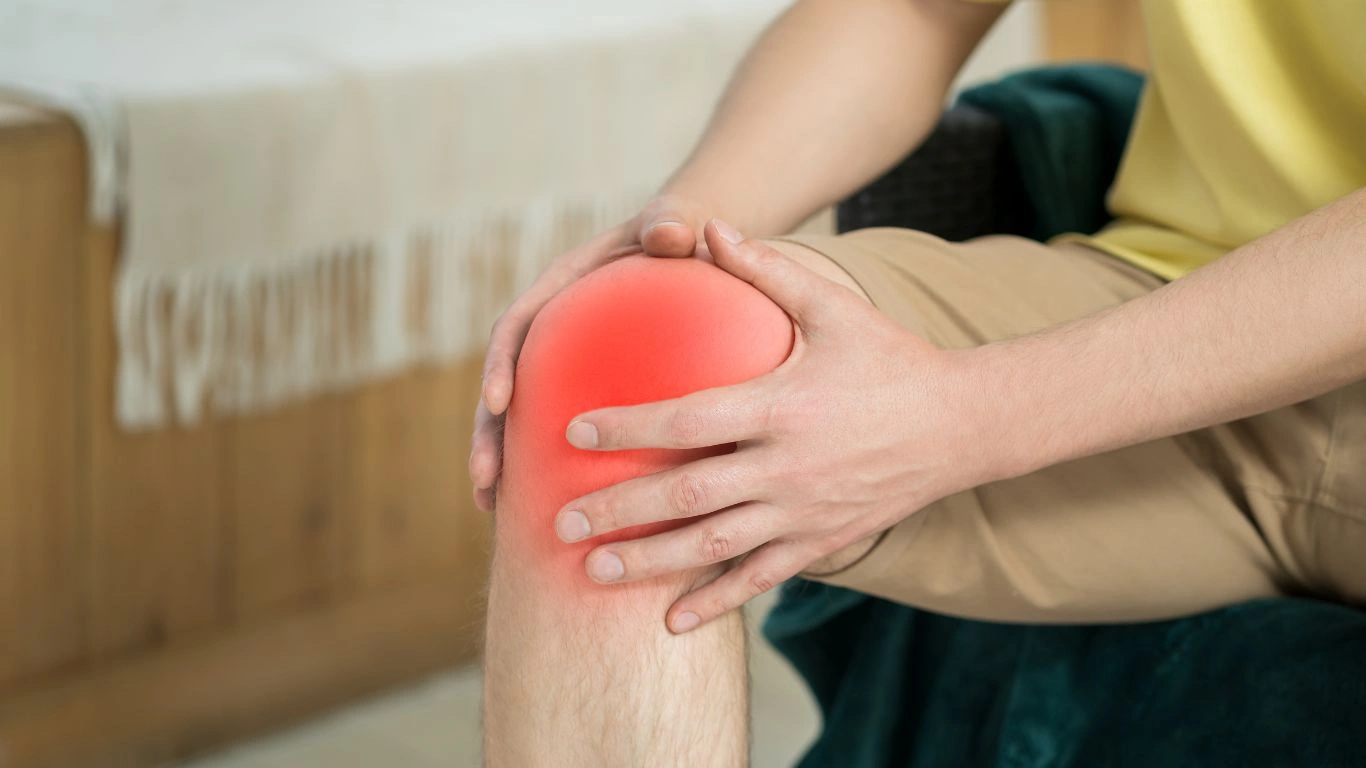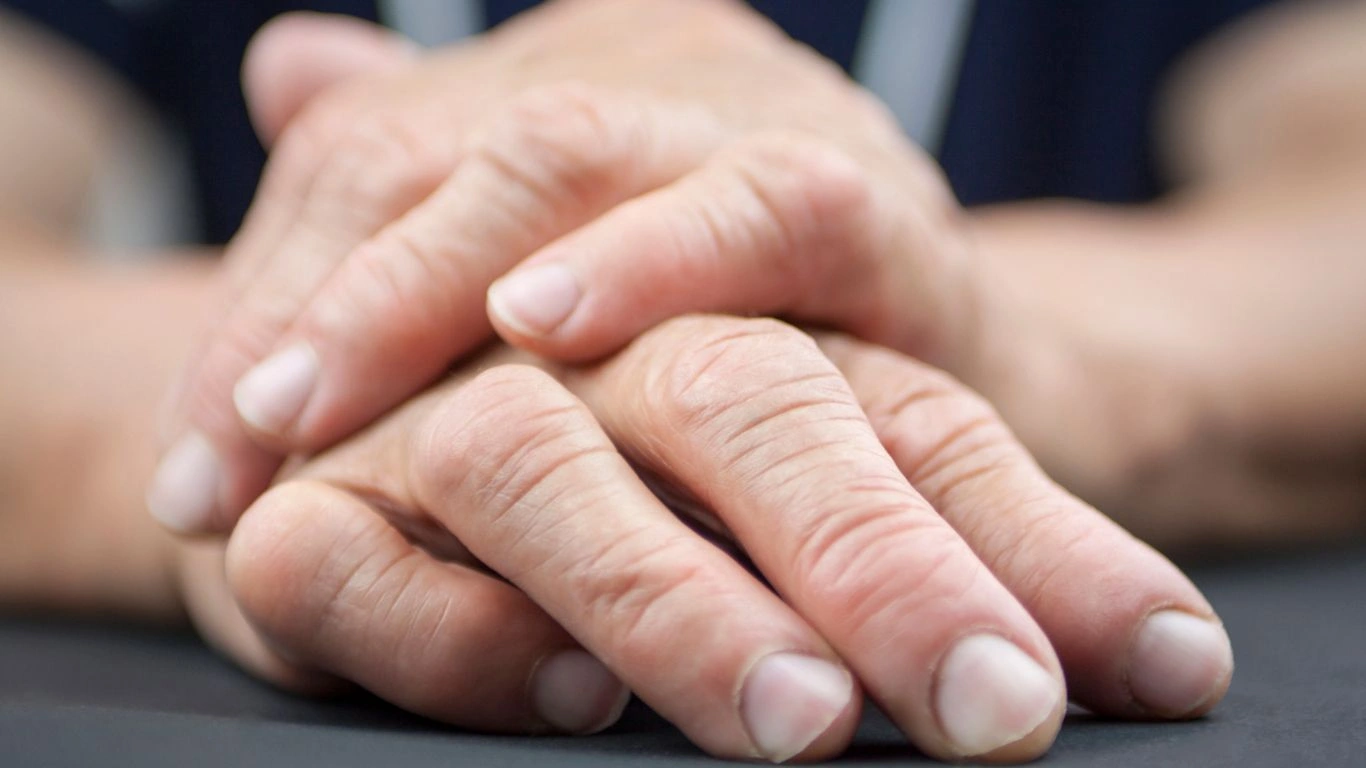Discover Why Rheumatoid Arthritis Causes Balance Problems Fast
If you’ve ever wondered, can rheumatoid arthritis cause balance problems?—you’re definitely not alone. As a Rheumatology nurse practitioner, I’ve seen firsthand how this autoimmune condition affects much more than just the joints. People often focus on the classic symptoms like joint pain and swelling, but balance issues are a sneaky, lesser-known challenge that many with rheumatoid arthritis (RA) face. It’s something I’ve encountered regularly in my clinical experience, and I’m here to break down why it happens, what you might expect, and some practical tips to manage it.
Understanding Rheumatoid Arthritis Beyond Joint Pain

When most people hear “rheumatoid arthritis,” they immediately think of inflamed joints and stiffness. And while these are hallmark signs, RA is actually a systemic autoimmune disease. This means it can affect multiple systems in the body — not just the joints. As a nurse practitioner, one of the important things I emphasize to patients is that RA can influence muscles, nerves, and even your overall sense of stability.
One of the tricky symptoms that tends to fly under the radar is balance impairment. You might ask, “How does a joint disease mess with my balance?” Well, it’s a bit more complex than it sounds.
Why Rheumatoid Arthritis Can Impact Your Balance
There are several reasons RA might cause balance problems, and understanding them can help you recognize early signs and seek the right support. Here are the key factors I’ve seen play a role:
- Joint inflammation and pain: When joints like the knees, ankles, or hips become inflamed, they lose some of their stability and flexibility. This inflammation can make it harder to maintain proper posture or adjust your footing, increasing the risk of stumbling or falls.
- Muscle weakness and fatigue: RA doesn’t just inflame joints — it can cause widespread muscle fatigue and weakness. When your muscles aren’t firing the way they should, keeping your balance becomes a real challenge.
- Nerve involvement: In some cases, RA can cause nerve damage or compression, such as in the cervical spine or hands. This can interfere with proprioception — your body’s ability to sense where it is in space — which is crucial for balance.
- Medications and side effects: Some treatments for RA, while necessary, might have side effects like dizziness or drowsiness that impact balance.
- Joint deformities: Chronic RA can lead to joint deformities that alter your gait or the way you walk, throwing off your equilibrium.
The Real-Life Impact: What I’ve Seen in Practice
In my years of working with RA patients, I’ve observed how balance problems often sneak up quietly. Some patients notice subtle wobbliness or a tendency to trip on uneven surfaces. Others might feel more cautious while walking, especially in dimly lit areas or on stairs.
One memorable case was a woman in her early 50s who came in worried about increasing falls. She had been managing RA well for years, but lately, she’d lost confidence in her ability to move safely. After a thorough evaluation, we identified that her ankle joints were significantly affected, and muscle fatigue was making it harder for her to stay steady. Together, we developed a plan that included physical therapy focused on balance training and strengthening exercises, and her confidence improved dramatically over a few months.

Recognizing Balance Problems Early: Signs to Watch For
If you’re living with RA, keeping an eye out for early signs of balance difficulties can help you take action before falls or injuries happen. Here are some common red flags I share with my patients:
- Frequent tripping or stumbling: If you notice you’re catching your foot on rugs or steps more often, it might be time to check in with your healthcare provider.
- Feeling unsteady on your feet: A sensation of wobbling or shakiness when standing or walking can signal underlying issues.
- Difficulty navigating uneven surfaces: Uneven ground, gravel paths, or grassy areas might suddenly feel more challenging.
- Needing support to get up or sit down: If you find yourself grabbing furniture or walls more frequently, it’s a sign your balance is compromised.
- Changes in gait or walking pattern: Noticeable limping, shuffling, or favoring one leg can indicate joint or muscle problems affecting your stability.
Spotting these early can make a big difference in managing balance issues effectively, which is why I encourage open conversations about these symptoms during appointments. Balance concerns are common, but they’re not something you have to just “live with.”

How to Protect Yourself and Improve Balance with RA
While RA-related balance problems can be frustrating, there are several proactive steps you can take to reduce risk and feel more steady on your feet. Here are some of the best strategies I’ve found useful in clinical practice and personally recommend:
- Regular physical therapy: Targeted exercises can strengthen muscles, improve joint flexibility, and enhance proprioception.
- Use assistive devices when needed: Canes, walkers, or even supportive shoes can provide extra stability.
- Home safety modifications: Remove tripping hazards like loose rugs, improve lighting, and install grab bars in bathrooms.
- Stay active: Low-impact activities such as swimming or yoga can boost balance without over-stressing joints.
- Communicate with your healthcare team: Always mention any balance concerns so your treatment plan can be adjusted accordingly.
Understanding that balance problems are part of the RA picture helps you take control rather than feeling helpless. With the right approach, many patients regain confidence and maintain their independence.
Common Conditions Linked to Rheumatoid Arthritis That Affect Balance

While RA itself can contribute to balance problems, there are several related conditions that often come along for the ride and can make things even trickier. In my clinical experience, identifying these overlapping issues is key to crafting a comprehensive care plan that truly helps patients regain stability.
Peripheral Neuropathy: When Nerves Send Mixed Signals
Peripheral neuropathy is something I’ve seen quite a bit among people with RA. Basically, it means the nerves outside the brain and spinal cord are damaged or irritated. This can cause numbness, tingling, or weakness, especially in the feet and legs — and that directly impacts balance.
The tricky part is neuropathy symptoms can sneak up slowly, sometimes mistaken for just “getting older” or general fatigue. But if you’re feeling persistent numbness or that your feet aren’t “feeling” the ground properly, it’s something worth discussing with your rheumatologist or nurse practitioner. I always encourage patients to bring this up early because the sooner it’s addressed, the better.
Cervical Spine Issues: More Than a Neck Problem
Another area that sometimes surprises patients is the neck, specifically the cervical spine. RA can cause inflammation and even damage to the joints in the neck, which can compress nerves or the spinal cord. This compression can mess with your body’s communication pathways, affecting muscle control and balance.
I remember a patient who had been struggling with neck stiffness and some balance issues. After careful evaluation and imaging, we discovered cervical spine involvement. This changed the whole treatment approach, including physical therapy tailored to improve neck mobility and nerve function. It’s a good reminder that balance problems in RA are often multifaceted.
How Inflammation Plays a Role in Balance Problems

Let’s talk about inflammation — it’s the core of RA, right? And it’s not just about swollen joints. Chronic inflammation affects your entire body, including muscles and the nervous system, both of which are vital for maintaining balance.
Inflammation in muscles can cause weakness and fatigue, which we already touched on, but inflammation in the nervous system can disrupt nerve signaling. When nerves don’t communicate properly with your brain, your body can lose track of where it is in space, making you more prone to losing balance.
In my practice, I’ve found that controlling inflammation aggressively often helps improve balance indirectly. When we get inflammation under control, patients often report feeling steadier and less fatigued. So, effective RA management isn’t just about easing joint pain — it can have ripple effects on your overall stability.
How Medication Can Influence Balance
Now, here’s something patients ask me about a lot: “Could my RA meds be causing my balance issues?” It’s a fair question. Some medications, especially those that cause dizziness, drowsiness, or low blood pressure, can impact your stability.
Drugs like corticosteroids, certain pain relievers, or even biologics can have side effects that might make you feel lightheaded or unsteady. It’s essential to keep your healthcare team in the loop if you notice new or worsening balance problems after starting or changing medication. Often, a simple dosage adjustment or switching to a different drug can make a huge difference.
Practical Tips From My Experience to Help Maintain Balance with RA

Managing balance issues in RA isn’t just about treatment in the doctor’s office — it’s about daily habits and practical changes you can make at home and in your routine. Here are some of my favorite tips that I share regularly with patients:
- Balance training exercises: Simple exercises like standing on one foot, heel-to-toe walking, or even tai chi can improve coordination and strength over time.
- Stay active but smart: Low-impact activities like swimming or gentle yoga not only protect your joints but also help improve your overall balance and muscle tone.
- Footwear matters: Supportive, non-slip shoes make a huge difference. Avoid walking barefoot or in socks on slippery floors, which can increase the risk of falls.
- Use mobility aids when needed: Canes, walkers, or grab bars aren’t signs of weakness—they’re tools to keep you safe and independent.
- Keep your environment safe: Make sure your living space is free of clutter, well-lit, and has sturdy handrails where needed. Small adjustments can prevent big accidents.
I always remind patients: don’t wait until a fall happens to take these precautions seriously. Being proactive can save you from painful injuries and maintain your confidence to move around freely.
The Role of Nutrition and Overall Health
From my perspective, supporting your balance with RA isn’t only about managing joints and muscles. Nutrition and overall health play a big part too. Adequate vitamin D, calcium, and proper hydration support muscle function and bone strength, reducing fall risk.
Plus, managing other chronic conditions like diabetes or hypertension helps keep your body running smoothly. When you combine good nutrition with targeted physical activity and medical care, it creates a strong foundation for better balance.
I’ve seen patients transform not just their symptoms but their quality of life by taking a holistic approach. It’s about treating the whole person, not just the RA.
When to Seek Professional Help for Balance Problems with RA

Living with rheumatoid arthritis and its effects on balance can be challenging, but knowing when to reach out for professional help is crucial. From my experience, patients who wait too long to address balance issues often face avoidable injuries or a loss of independence. So, if you’re wondering whether your balance concerns warrant a visit to your healthcare provider, here are some signs I always stress to my patients:
- Frequent falls or near-falls: If you’ve had more than one fall or often feel like you’re going to fall, it’s time to get evaluated.
- Sudden or worsening dizziness: Feeling lightheaded or dizzy, especially when standing up, can be a red flag that shouldn’t be ignored.
- New numbness or tingling: Changes in sensation in your feet or legs can signal nerve involvement that needs prompt attention.
- Difficulty walking or needing assistance: If your walking pattern changes drastically or you find it hard to move without support, professional guidance is important.
During your appointment, your healthcare provider might perform a detailed balance and gait assessment, neurological exams, and possibly imaging or nerve studies. These tests help pinpoint the exact causes of your balance problems and guide the best treatment plan tailored for you.
My Experience with Multidisciplinary Care
One of the most effective approaches I’ve witnessed—and often recommend—is a multidisciplinary team effort. Rheumatologists, physical therapists, occupational therapists, and sometimes neurologists working together can really make a difference. Physical therapists, in particular, are game-changers when it comes to balance training and fall prevention.
I recall a patient who was hesitant to try physical therapy but after starting tailored balance exercises, she reported feeling more confident walking outdoors again. It’s stories like hers that remind me balance problems don’t have to take over your life.
Innovative Therapies and Emerging Research

Medicine is always evolving, and with RA, new therapies continue to emerge that might help with balance and mobility. Beyond traditional treatments, research is looking at:
- Neuromuscular electrical stimulation: This technique uses small electrical pulses to stimulate muscles and improve strength, which could help reduce balance issues.
- Virtual reality and balance training apps: Some physical therapists now incorporate VR technology to engage patients in fun, interactive balance exercises.
- Biologic medications with better side effect profiles: Newer RA drugs aim to reduce inflammation more precisely, potentially improving symptoms that affect balance without causing dizziness or fatigue.
While these are promising, it’s important to stay grounded and consult your healthcare team before trying new therapies. Every person’s RA journey is unique, and treatments should be individualized.
Self-Care and Mindset: The Unsung Heroes
Something I’ve learned over the years is that managing balance isn’t just physical—it’s mental too. Living with RA can be overwhelming, and balance problems add another layer of stress. That’s why I always encourage my patients to cultivate patience, stay positive, and seek support when needed.
Joining support groups or talking with others who understand RA can provide emotional relief and practical tips. Remember, you’re not alone on this journey. Celebrating small victories—like standing steadier or walking a bit farther—can boost your motivation and resilience.
References
- https://www.rheumatology.org/
- https://www.arthritis.org/
- https://www.mayoclinic.org/
- https://www.cdc.gov/arthritis/
Disclaimer
This article is intended for informational purposes only and should not replace professional medical advice, diagnosis, or treatment. If you are experiencing balance problems or symptoms related to rheumatoid arthritis, please consult your healthcare provider for personalized care.

Tarra Nugroho is a dedicated Nurse Practitioner with a strong foundation in family and preventive care. She brings both compassion and clinical expertise to her practice, focusing on patient-centered care and health education. As a contributor to Healthusias.com, Tarra translates medical knowledge into clear, empowering articles on topics like women’s health, chronic disease management, and lifestyle medicine. Her mission is simple: help people feel seen, heard, and informed—both in the clinic and through the content she creates. When she’s not caring for patients, Tarra enjoys weekend hikes, plant-based cooking, and curling up with a good health podcast.






